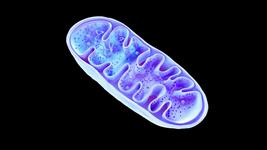CMN Weekly (29 November 2024) - Your Weekly CRISPR Medicine News
By: Gorm Palmgren - Nov. 29, 2024
Top picks
- Researchers from ETH Zürich have demonstrated that CRISPR-Cas9 editing with the DNA-PKcs inhibitor AZD7648 enhances homology-directed repair but induces kilobase- and megabase-scale deletions, translocations, and chromosome arm loss. These genomic alterations evade detection via standard sequencing, raising caution for clinical applications. Combining AZD7648 with PolQi2 reduces large deletions while retaining HDR efficiency, yet challenges with megabase-scale events remain.
- SPLICER, a new CRISPR-Cas9-based toolbox integrating adenosine and cytosine deaminases, enables precise editing of splice donor and acceptor sites to enhance exon skipping. Demonstrating therapeutic potential, SPLICER successfully targets APP exon 17, reducing Aβ42 peptide formation linked to Alzheimer's disease. This approach addresses the limitations of existing methods, offering efficient and broad applications for exon skipping in medicine and biotechnology.
Research
- Researchers from Estonia and elsewhere have shown that CRISPR-Cas9 repair outcomes depend on flanking DNA. Analysis in repair-deficient cells revealed Prkdc and Polm drive one bp insertions, with Nbn and Polq affecting deletions. Predictive models outperform current standards, enhancing precision in CRISPR mutagenesis and DNA repair understanding.
- American researchers have demonstrated that lipid nanoparticles (LNPs) optimised with ionisable lipids and cell-penetrating peptides significantly enhance in vivo delivery and editing efficiency of CRISPR-Cas ribonucleoproteins. The optimised LNPs achieved up to 300-fold improvements with minimal off-target effects, providing a safer alternative to viral delivery systems.
- Intravenous delivery of a novel blood-brain barrier-crossing conjugate (BCC10) has been shown to enable γ-secretase-mediated transcytosis of antisense oligonucleotides into the brain. This system achieves significant gene silencing in mice, ALS models, and ex vivo human brain tissue, demonstrating the potential for systemic delivery of CNS therapies without invasive methods.
- A CRISPR-Cas9-based method delivered via a conductive hydrogel enables direct in vivo editing of T-cells in lymph nodes, targeting PD1 to improve immune checkpoint blockade therapy. Edited T-cells showed enhanced tumour control in melanoma mouse models, increasing survival and preventing recurrence.
- Lipid nanoparticles (LNPs) have been adapted to deliver nucleic acids into Gram-negative bacteria, including E. coli, using LNP-helper pretreatment to weaken bacterial membranes. Encapsulating Cas13a/gRNA plasmids in LNPs, combined with polymyxin B, effectively controlled E. coli infections in Galleria mellonella and mice, demonstrating LNPs' potential for targeting pathogenic bacteria with precision.
- Engineered Cas9 fusion proteins enable transcription-associated Cas9 targeting (TraCT), coupling DNA targeting with transcription by binding nascent RNA. This system allows selective editing in yeast and human cells, even at identical or allelic loci with differential transcription. TraCT achieves temporal control without altering Cas9 core domains or guide RNA, offering a novel mechanism for precise DNA editing.
- Intact protein barcoding using ubiquitin with N-terminal tags enables simultaneous detection of CRISPRi strain barcodes and metabolites via flow injection mass spectrometry (FI-MS). This scalable method improves high-throughput analysis, revealing metabolic changes in targeted pathways. Applied to 132 barcoded strains, it enhances metabolome screening in genetically engineered libraries, offering efficient and multiplexed insights into strain-specific functions.
Industry
- Intellia Therapeutics' CRISPR-based therapy, nexiguran ziclumeran (nex-z), for hereditary ATTR amyloidosis with polyneuropathy has been granted Regenerative Medicine Advanced Therapy (RMAT) designation by the FDA. Nex-z is a single-dose in vivo treatment targeting the TTR gene to halt TTR protein production. Interim Phase 1 data showed rapid, durable TTR reduction. This designation accelerates regulatory review, advancing nex-z as a potential transformative therapy.
- Roche will acquire Poseida Therapeutics for up to $1.5 billion, including $9.00 per share upfront and $4.00 per share contingent on milestones. Poseida's innovative non-viral, TSCM-rich CAR-T therapies will enhance Roche's cell therapy capabilities. The acquisition, expected to be completed in Q1 2025, will advance CAR-T programs targeting cancers and autoimmune diseases and expand access to genetic medicines.
- Scribe Therapeutics' CRISPR technologies have shown promising preclinical results for cardiometabolic diseases. The ELXR platform achieved a 67% LDL-C reduction in non-human primates for six months via epigenetic silencing. The XE platform reduced APOC3, triglycerides, and cholesterol by >90%, 97%, and 84%, respectively, with high specificity and no off-target effects.
- In a clinical phase 1 trial, CTX130, CRISPR Therapeutics' CD70-directed and CRISPR-Cas9-engineered allogeneic CAR T-cell therapy has demonstrated manageable safety and a 46.2% objective response rate in heavily pretreated T-cell lymphoma patients. Cytokine release syndrome was the most common adverse event, occurring in 67% of patients. Higher dose levels yielded improved responses, with 19.4% achieving complete remission. CTX131, a next-generation variant with enhanced gene edits, is under clinical development.
Detection
- Chinese researchers have validated a CRISPR-Cas12a-based detection method (ReCTC) for Enterocytozoon bieneusi diagnosis. It achieved a detection limit of 3.7 copies/µl, showing high sensitivity and specificity against other enteric pathogens. Superior to nested PCR, ReCTC effectively identified E. bieneusi in clinical samples and demonstrated potential for rapid, on-site applications, offering a promising tool for clinical diagnostics.
- A CRISPR-Cas12a-based biosensor for Langya Henipavirus (LayV) enables ultra-sensitive RNA detection, achieving ten copies/μL with RPA and 1200 copies/μL without amplification using an horseradish peroxidase (HRP)-ssDNA reporter. This rapid, precise, and amplicon-free method offers promising point-of-care diagnostics for emerging pathogens, particularly in resource-limited settings.
- A new CRISPR-Cas12a-based electrochemical biosensor detects tuberculosis biomarker IS6110 with a 14.5 nM sensitivity in 60 minutes using trans-cleavage activity on a PES-modified PolyT substrate. This first-of-its-kind Cas12a electrochemical platform demonstrates the potential for accurate, rapid point-of-care diagnostics for Mycobacterium tuberculosis.
Perspectives
- The integration of AI in genomics, including CRISPR applications, enhances precision and scalability but raises ethical concerns, such as risks to sentient beings, ecological disruptions, and biosecurity threats. Proactive ethical frameworks are essential to mitigate potential harms while responsibly advancing AI-driven CRISPR research and its transformative capabilities.
- On the contrary, Jennifer Doudna argues that AI and machine learning are transforming CRISPR applications, enabling faster genomic discoveries and enhancing precision in gene editing. In a perspective in Wired, she says that AI identifies novel genome editors, predicts heat-stable RNA molecules, and accelerates CRISPR-based therapies, such as those for sickle cell disease. Beyond medicine, AI-CRISPR synergies promise climate solutions, improved biomanufacturing, and resilient crops, marking the convergence of two pivotal technologies poised to redefine science and innovation.
- A systematic review of 31 studies on public engagement in human germline gene editing (HGGE) highlights gaps in including underrepresented groups. It emphasises co-created efforts to elicit values rather than mere acceptance levels. Clear pathways to societal impact remain underexplored, underscoring the need for more inclusive and outcome-oriented public engagement initiatives.
Reviews
- CRISPR-based genetic screens in human pluripotent stem cells derived neurons and brain organoids. This review explores CRISPR-based functional genomics screens in hPSC-derived neurons and brain organoids, highlighting their role in uncovering genes and pathways involved in neurodevelopmental disorders and advancing neurological disease research.
- Prime editing: therapeutic advances and mechanistic insights. This review examines the progress and clinical potential of prime editing, highlighting advancements in its mechanism, efficiency, and versatility for precise gene therapy applications.
- Advances in CRISPR-Cas technology and its applications: Revolutionising precision medicine. This review explores the latest advancements in CRISPR-Cas technology and its therapeutic and biomedical applications, highlighting its transformative impact on precision medicine.
News from CRISPR Medicine News
- As we warm up for the 2nd CRISPR Medicine Conference 2025 in Copenhagen this spring, WeDoCRISPR presents a series of short video testimonials from attendees of last year's conference. Check out what Colette Rogers and Pietro De Angeli have to say about it.
- On Wednesday, we hosted a live webinar in which Kelly Banas from the ChristianaCare Gene Editing Institute spoke about "Targeting Drug Resistance in Solid Tumours Using CRISPR-Directed Gene Editing." The webinar is now available on demand.
- On Tuesday, our sister site, CARBON (CRISPR AgroBio News), sent out its monthly newsletter with all the latest information about CRISPR and gene editing in agriculture. The main story was that CRISPR-edited Chardonnay grapes now grow in European soils. Check it out!
To get more CRISPR Medicine News delivered to your inbox, sign up to the free weekly CMN Newsletter here.
Tags
ArticleMissing linksNewsCMN WeeklyCRISPR Therapeutics AGIntellia Therapeutics, Inc.Poseida TherapeuticsRocheScribe Therapeutics
CLINICAL TRIALS
IND Enabling
Phase I
Phase II
Phase III
Recurrent or Progressive High-grade Glioma, (NCT06737146)
Sponsors:
Suzhou Maximum Bio-tech Co., Ltd.
Sponsors:
Suzhou Maximum Bio-tech Co., Ltd.
IND Enabling
Phase I
Phase II
Phase III
Advanced Peritoneal Malignancies or Abdominal Metastatic Solid Tumors, (NCT06912152)
Sponsors:
Zhejiang University
Sponsors:
Zhejiang University
IND Enabling
Phase I
Phase II
Phase III







